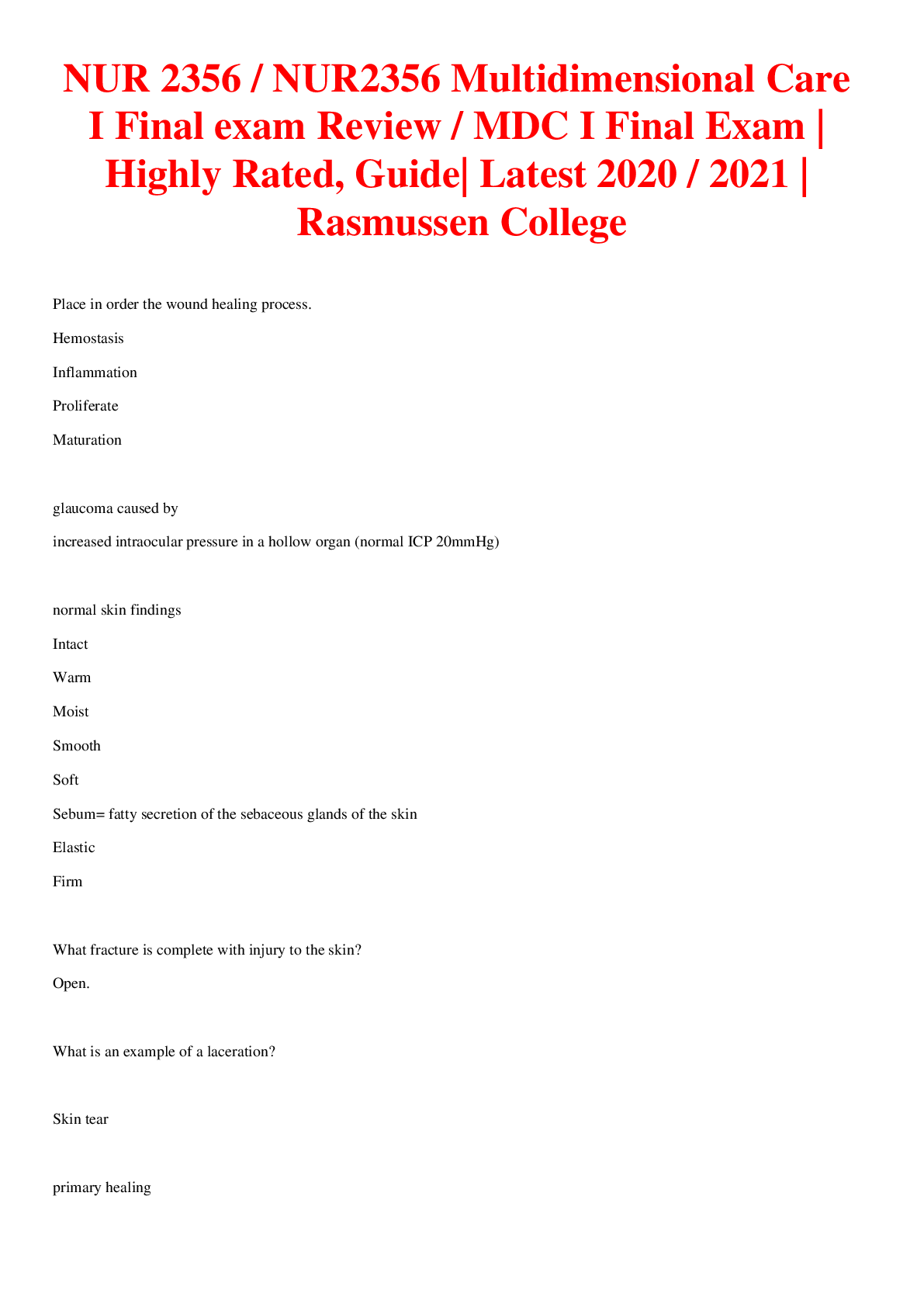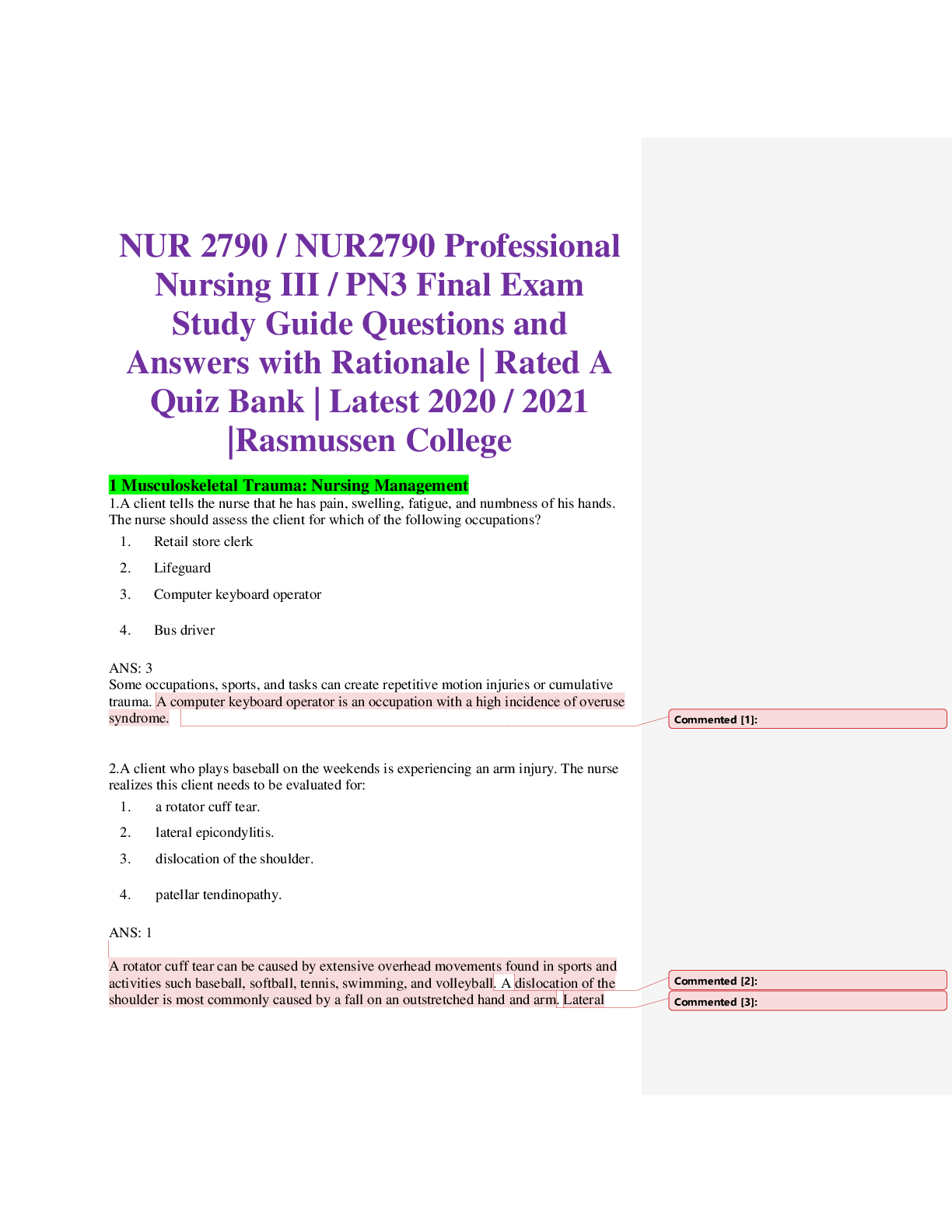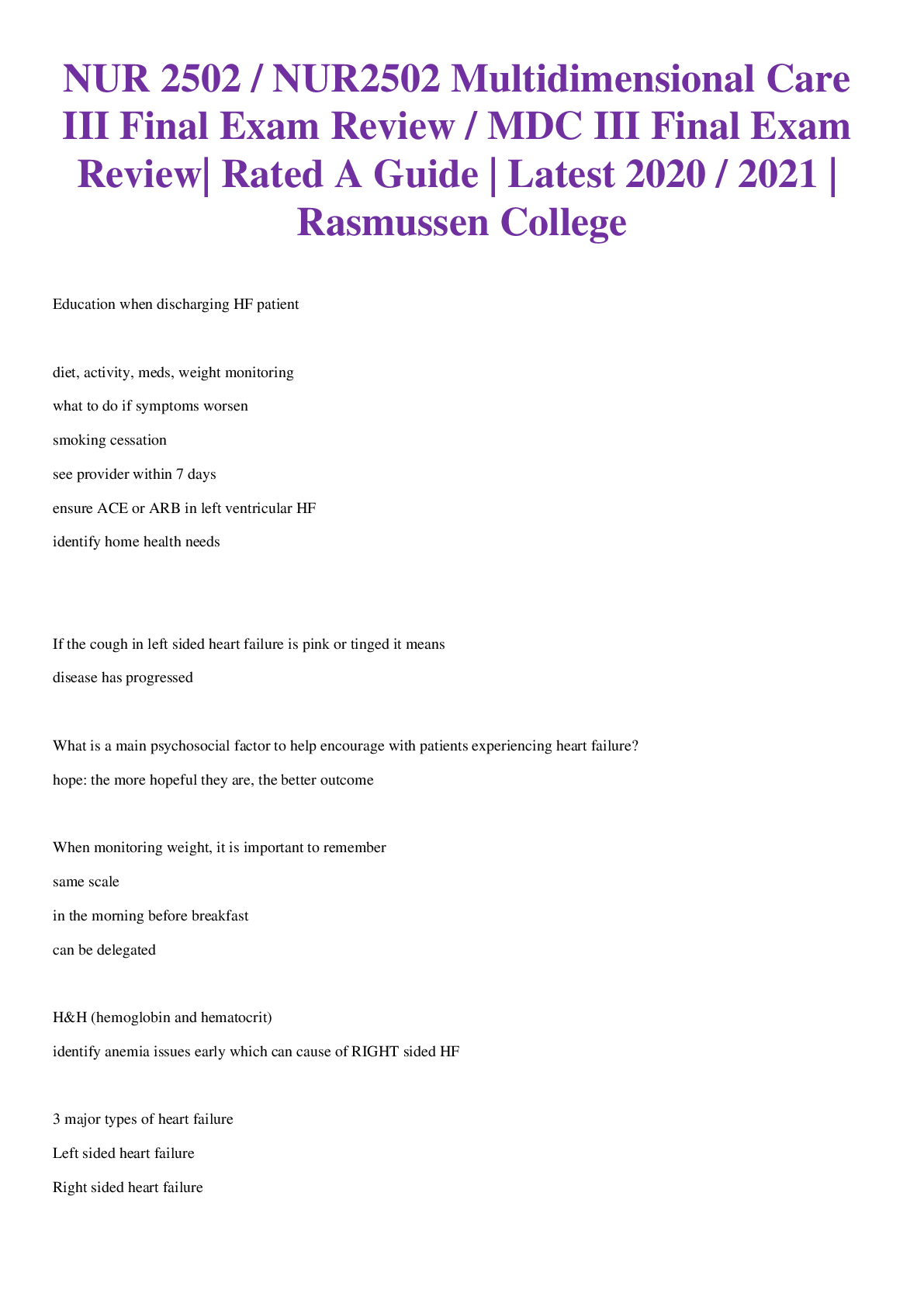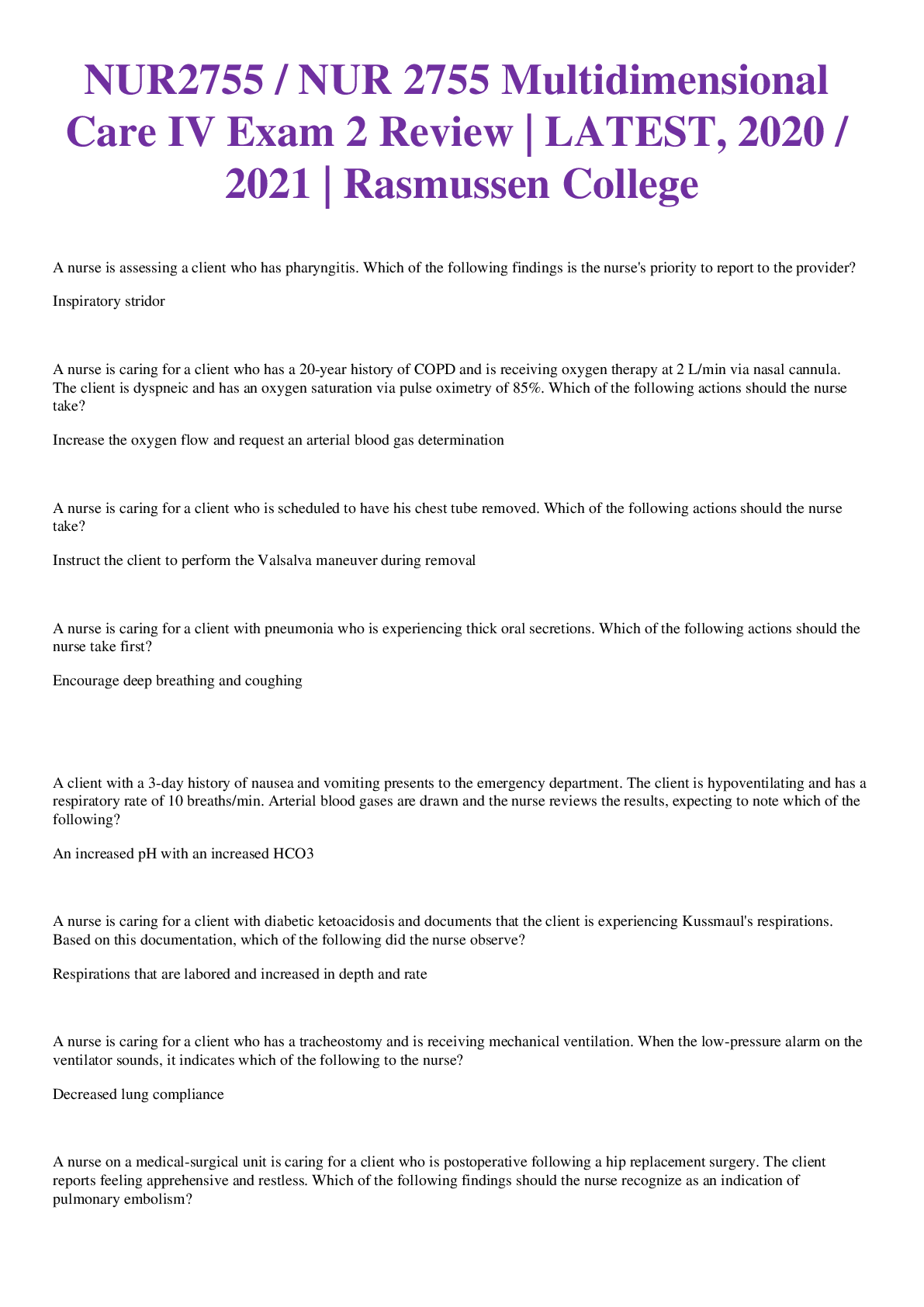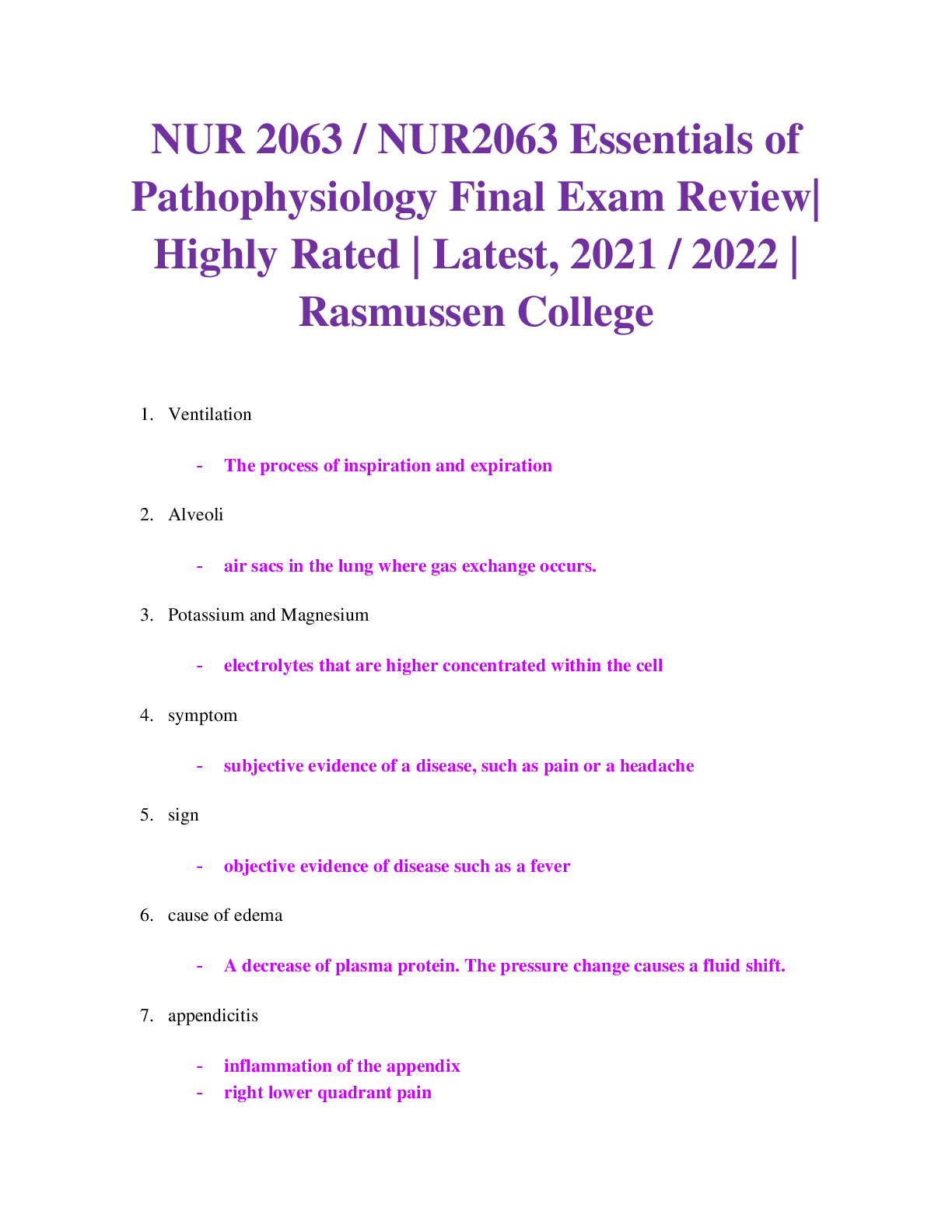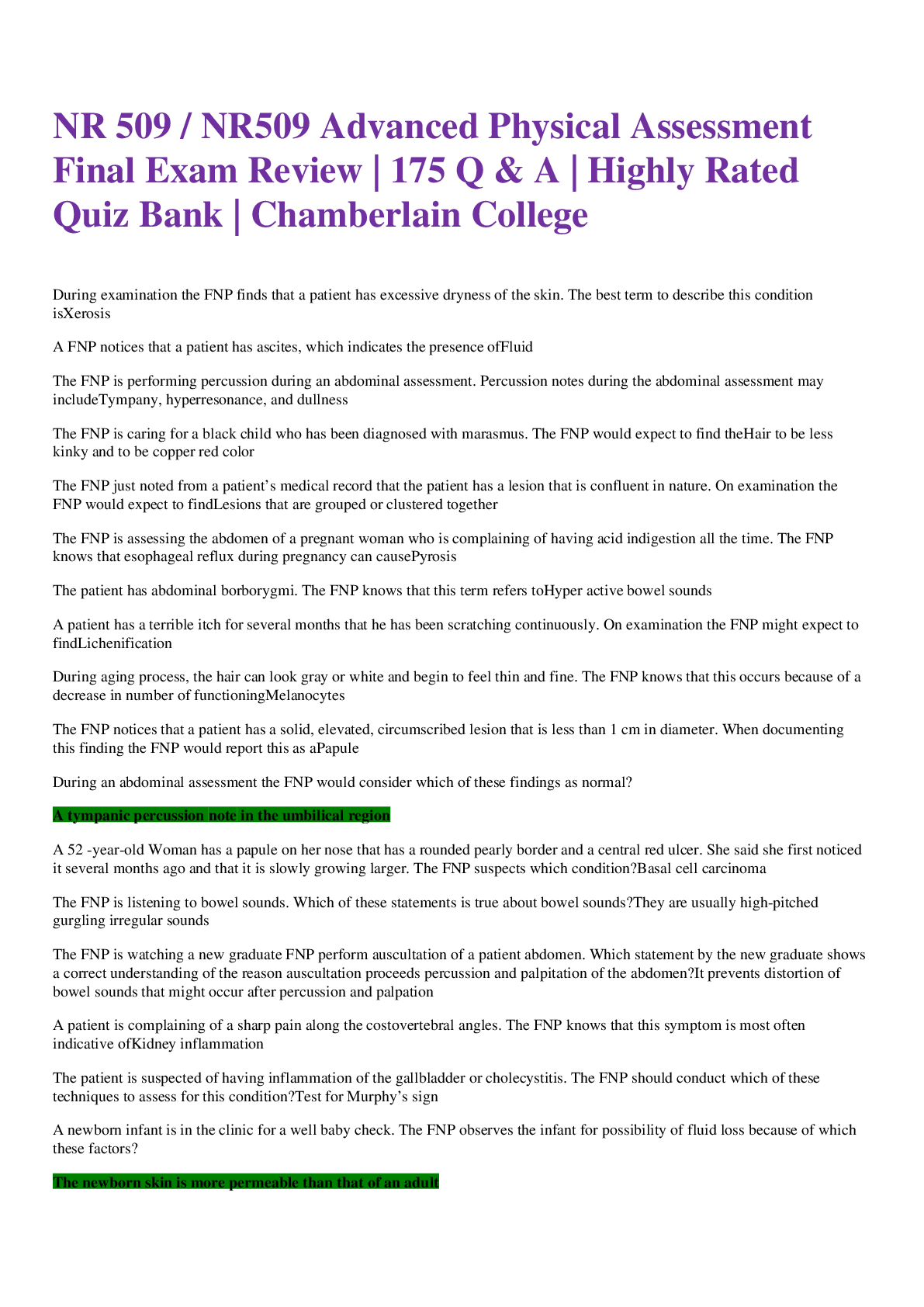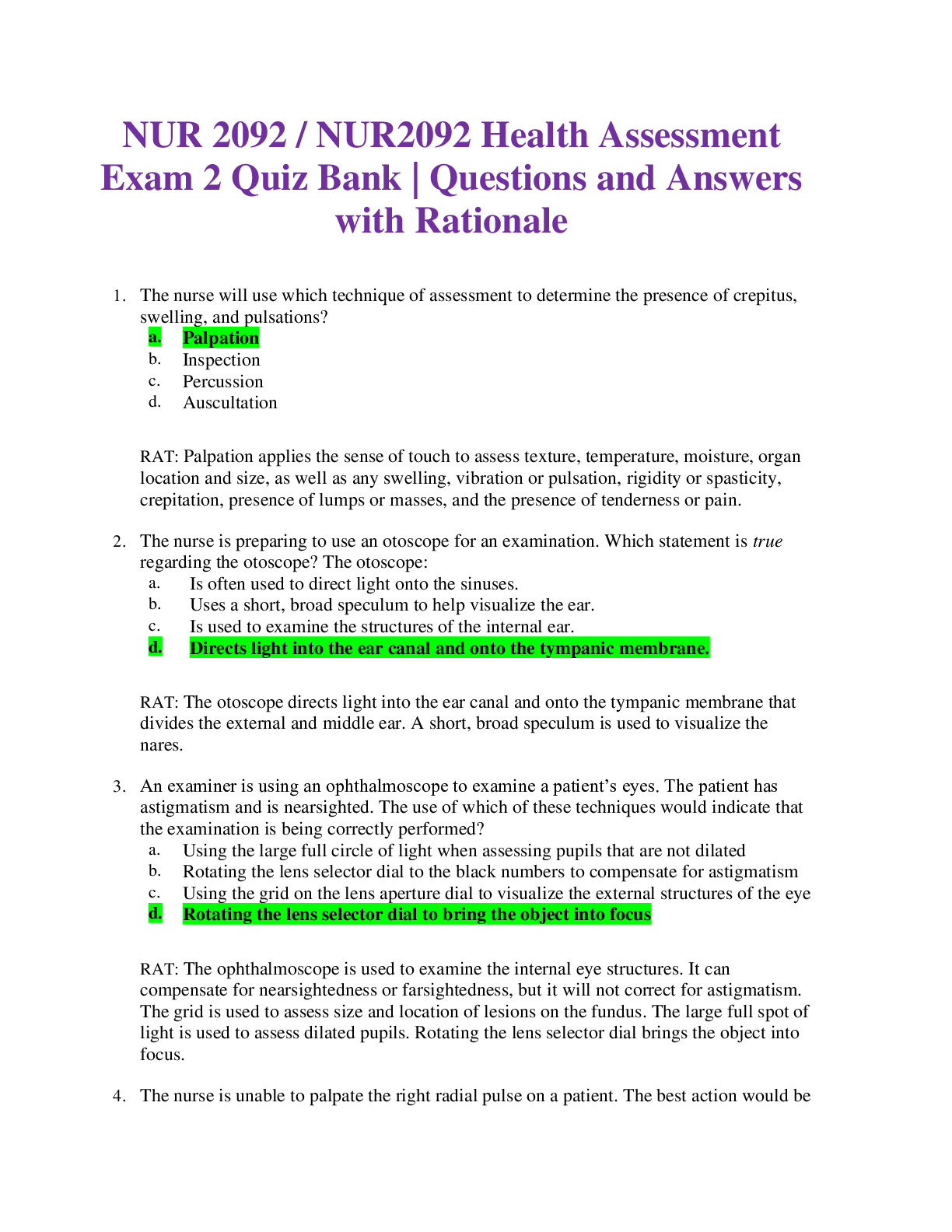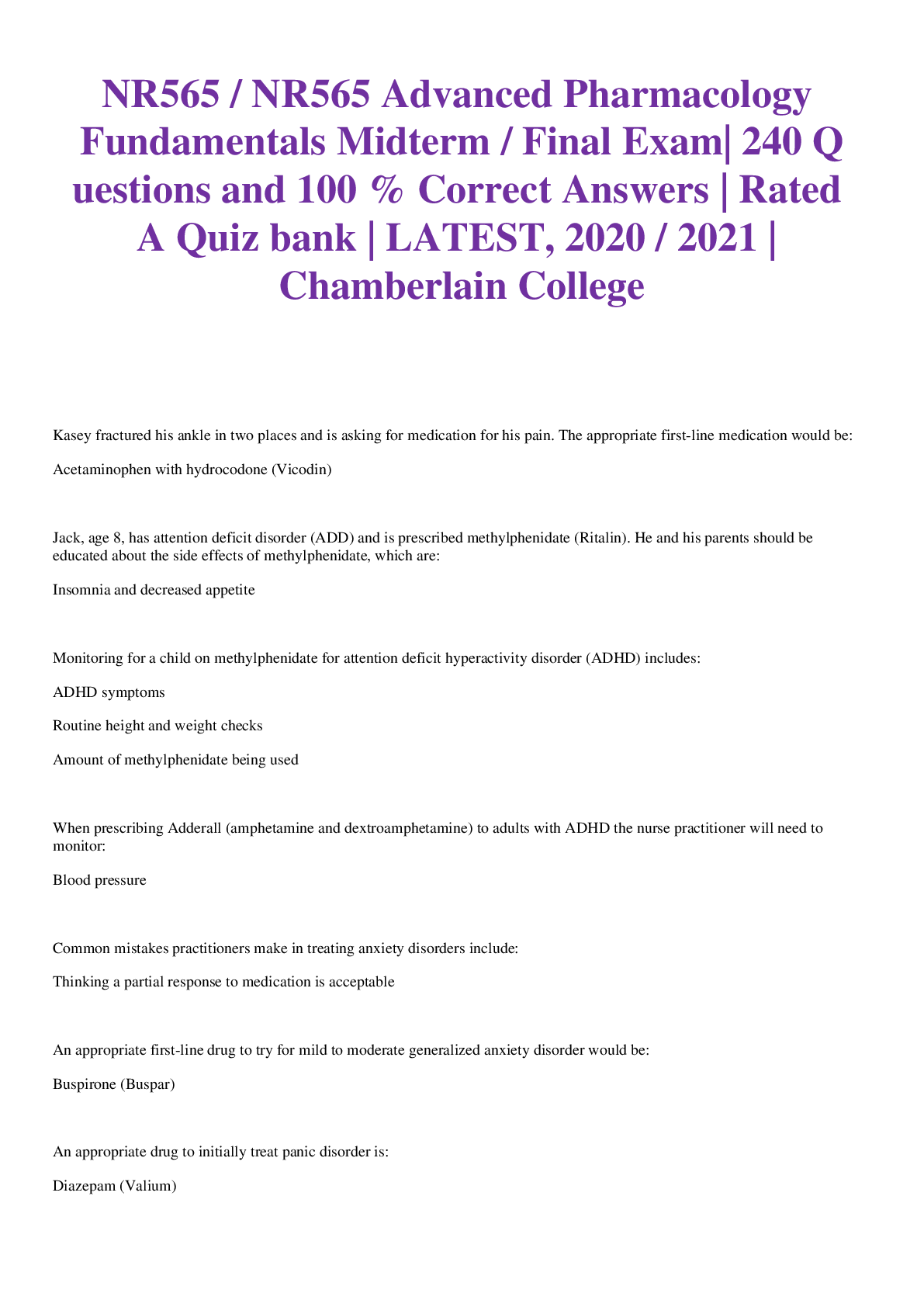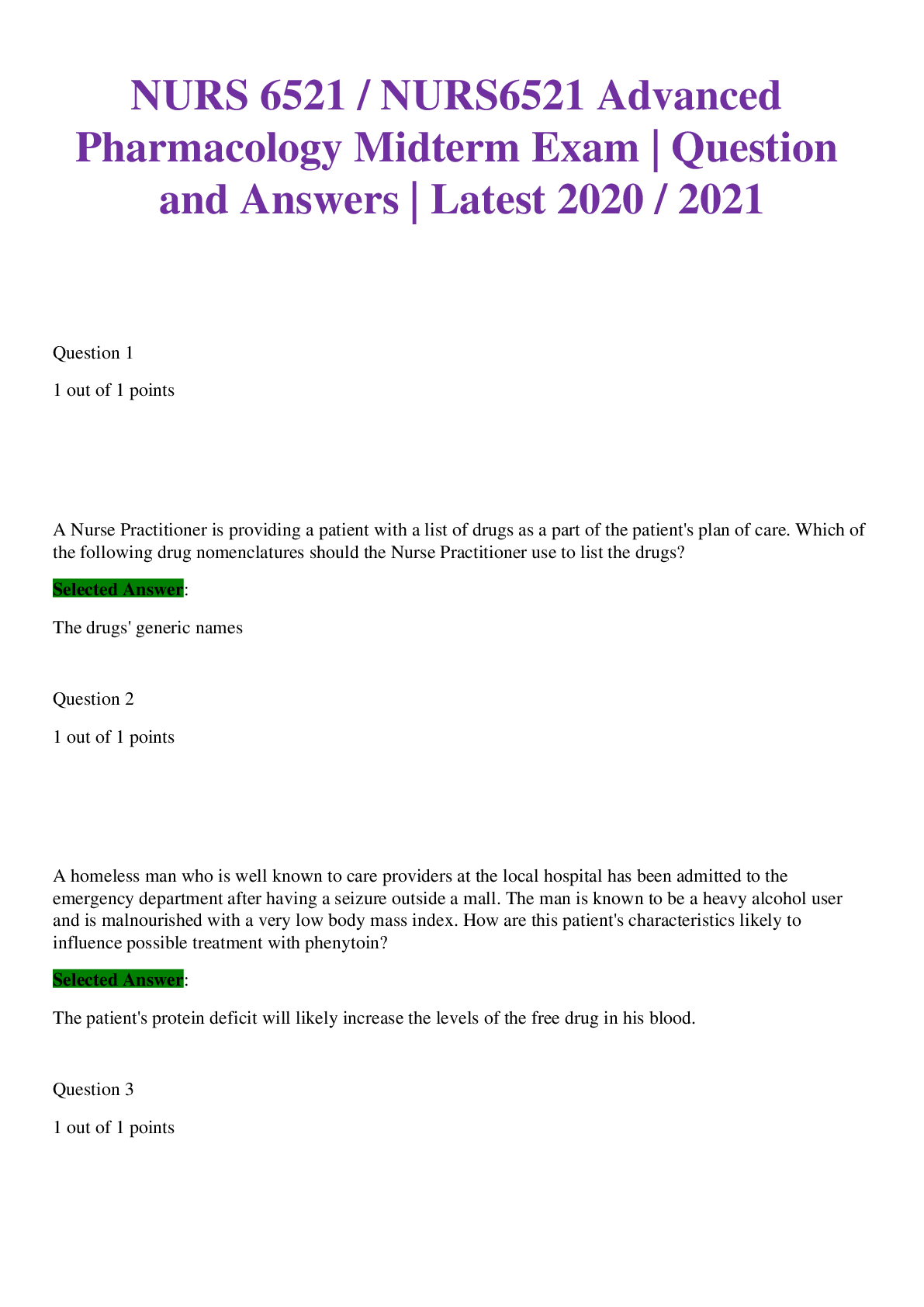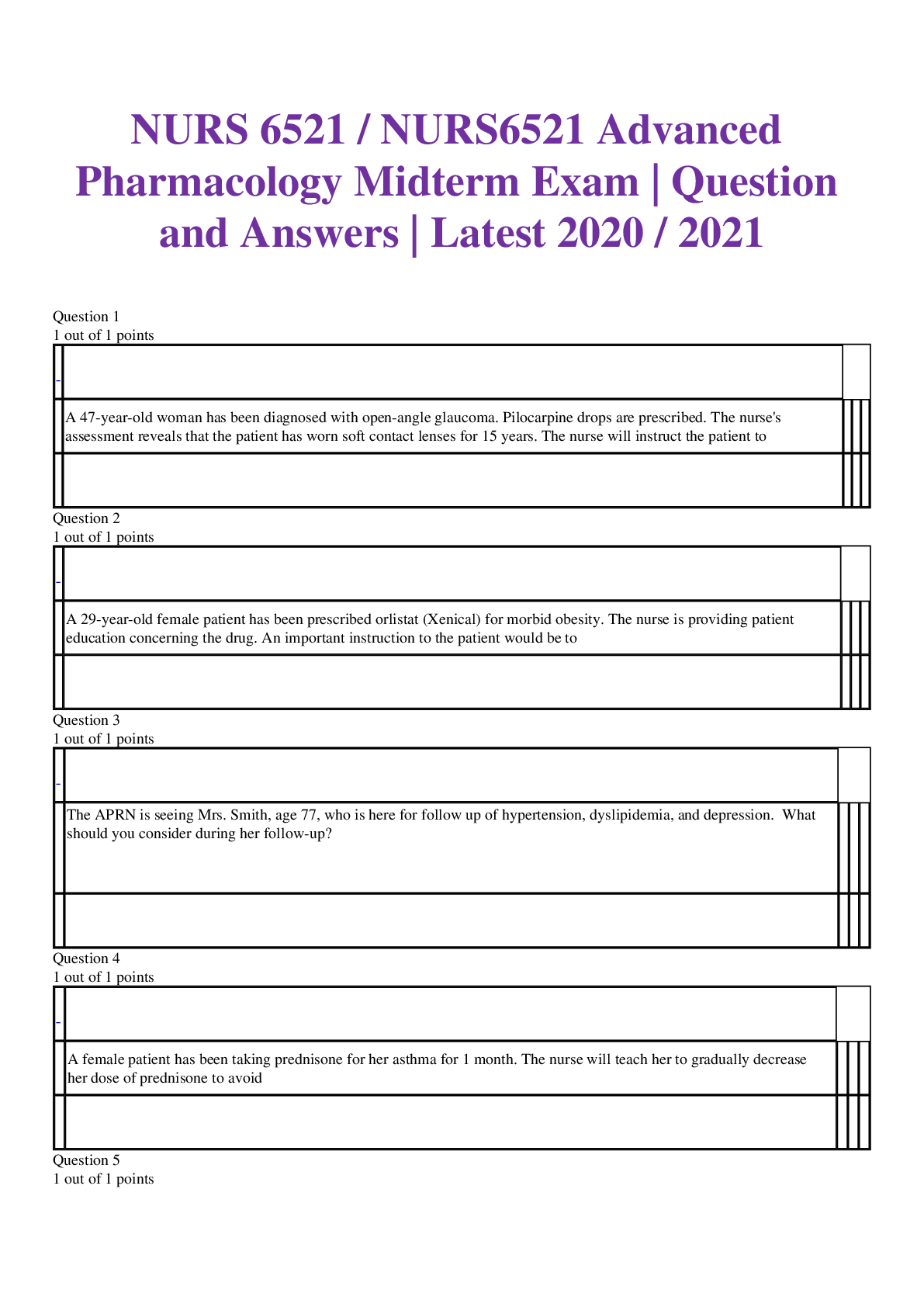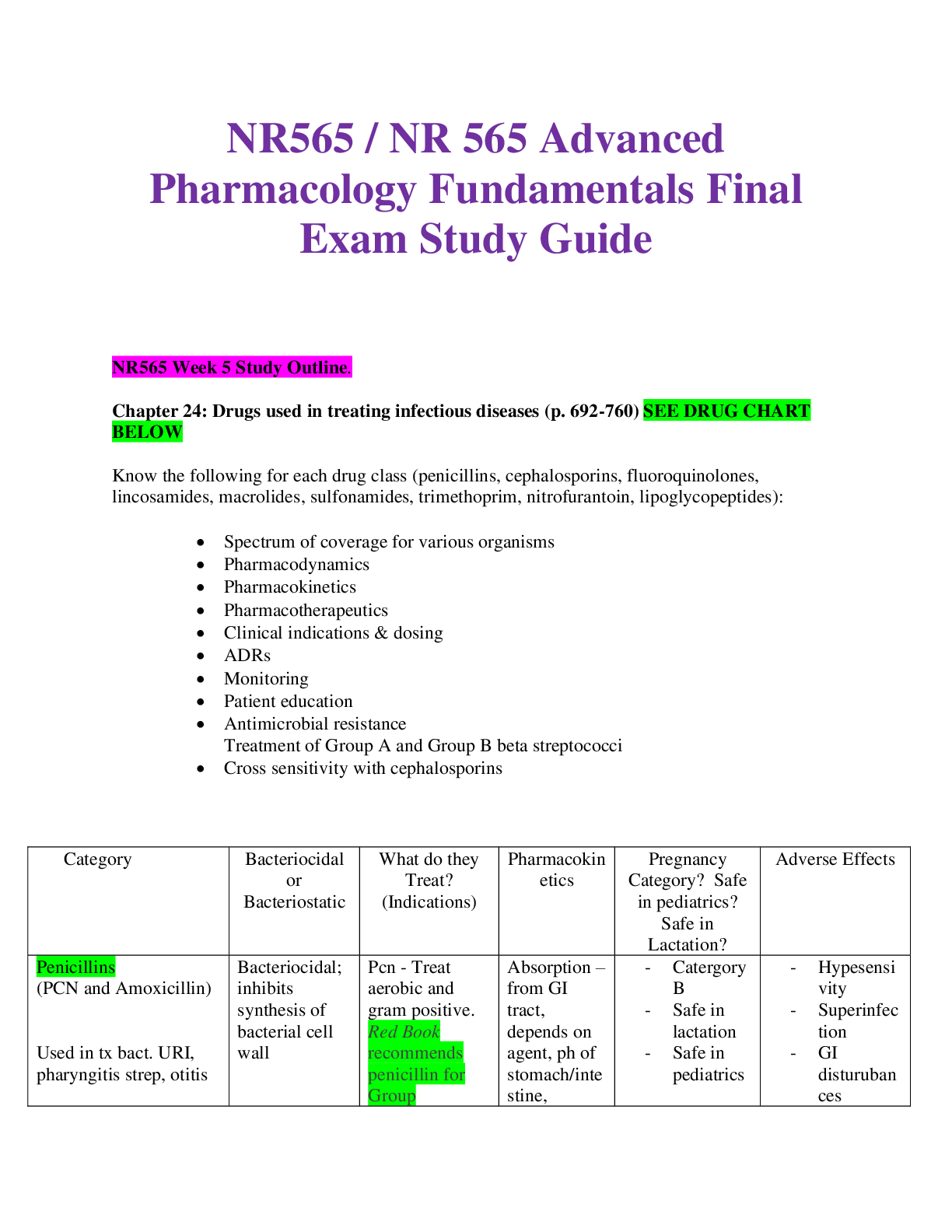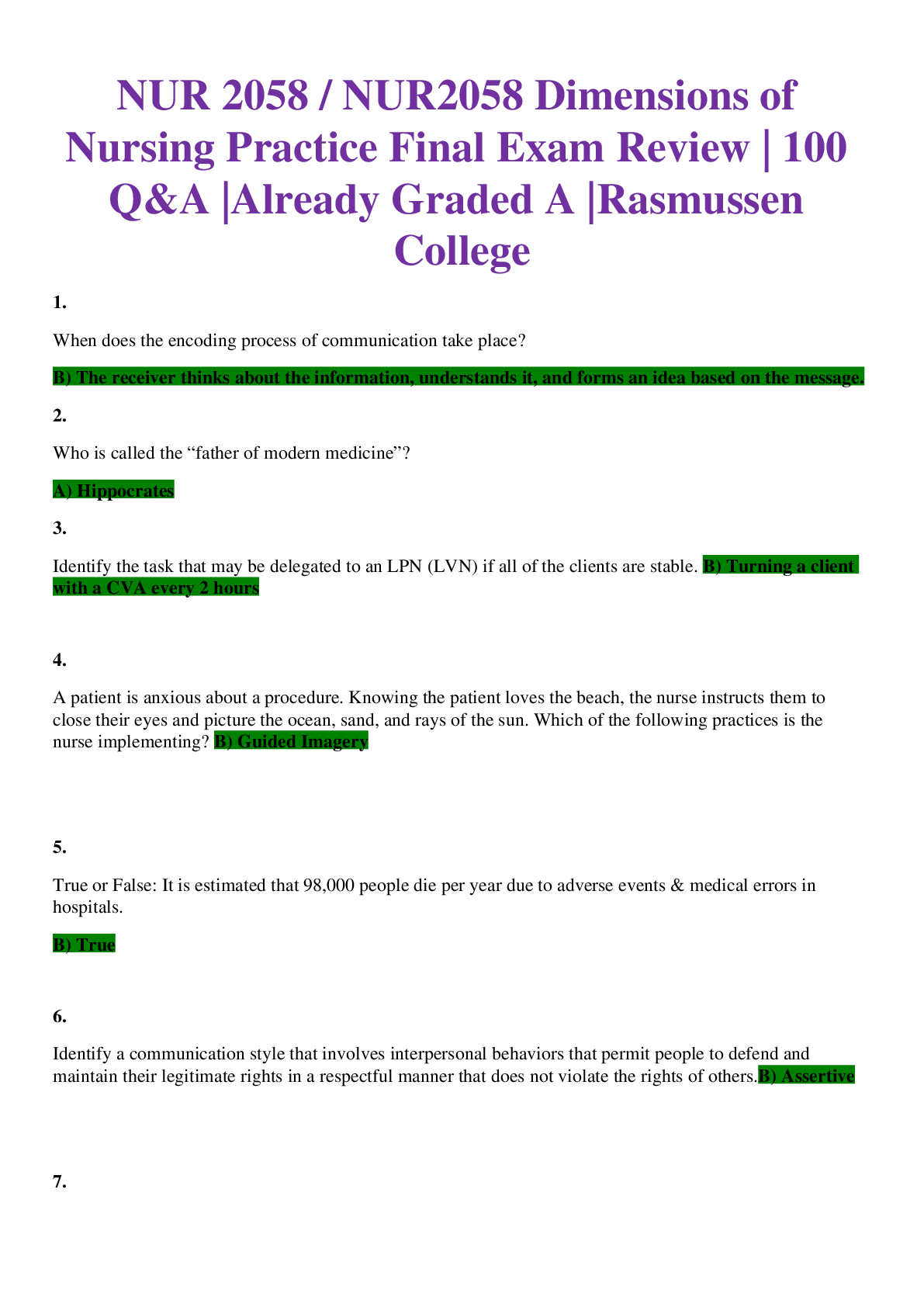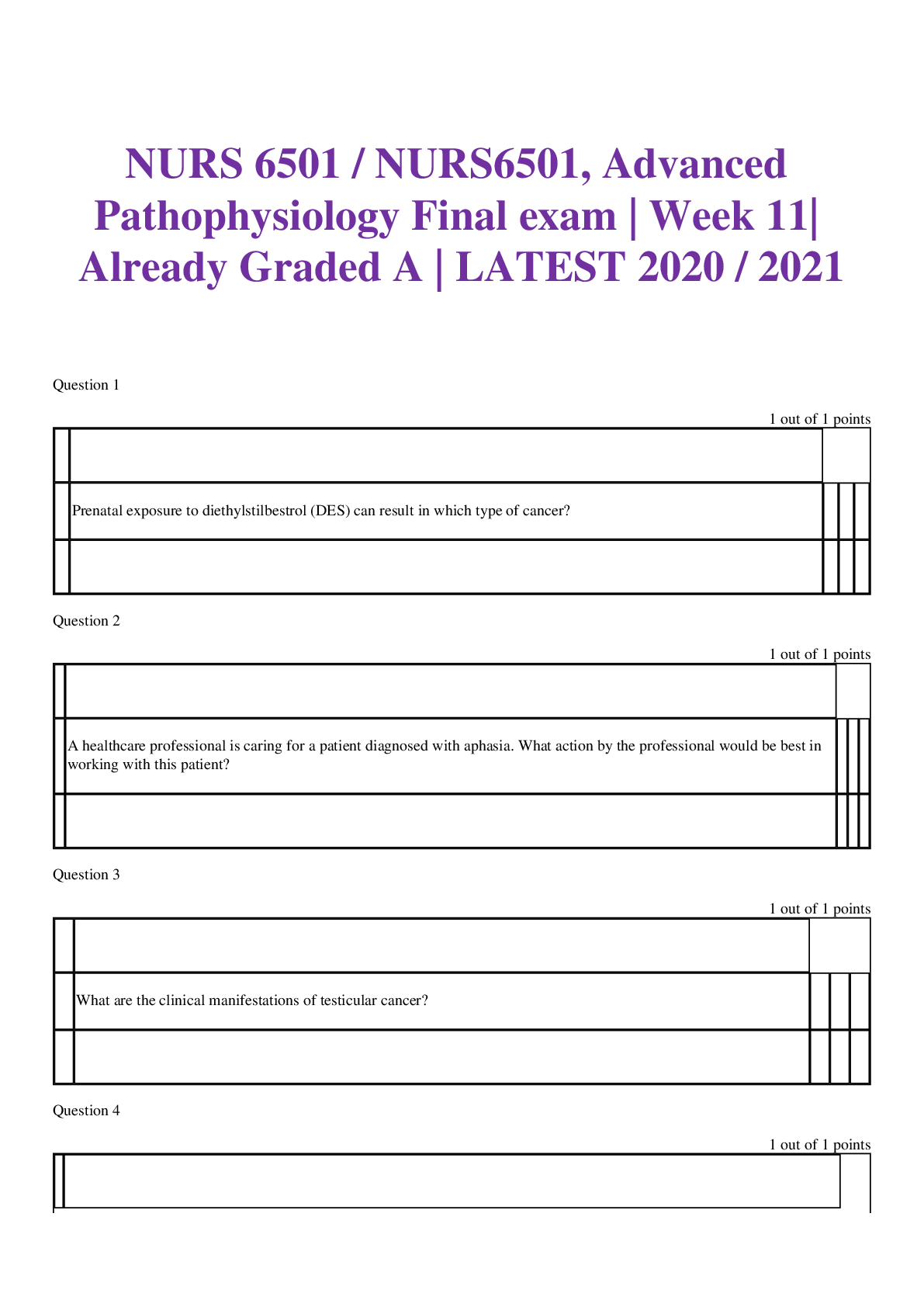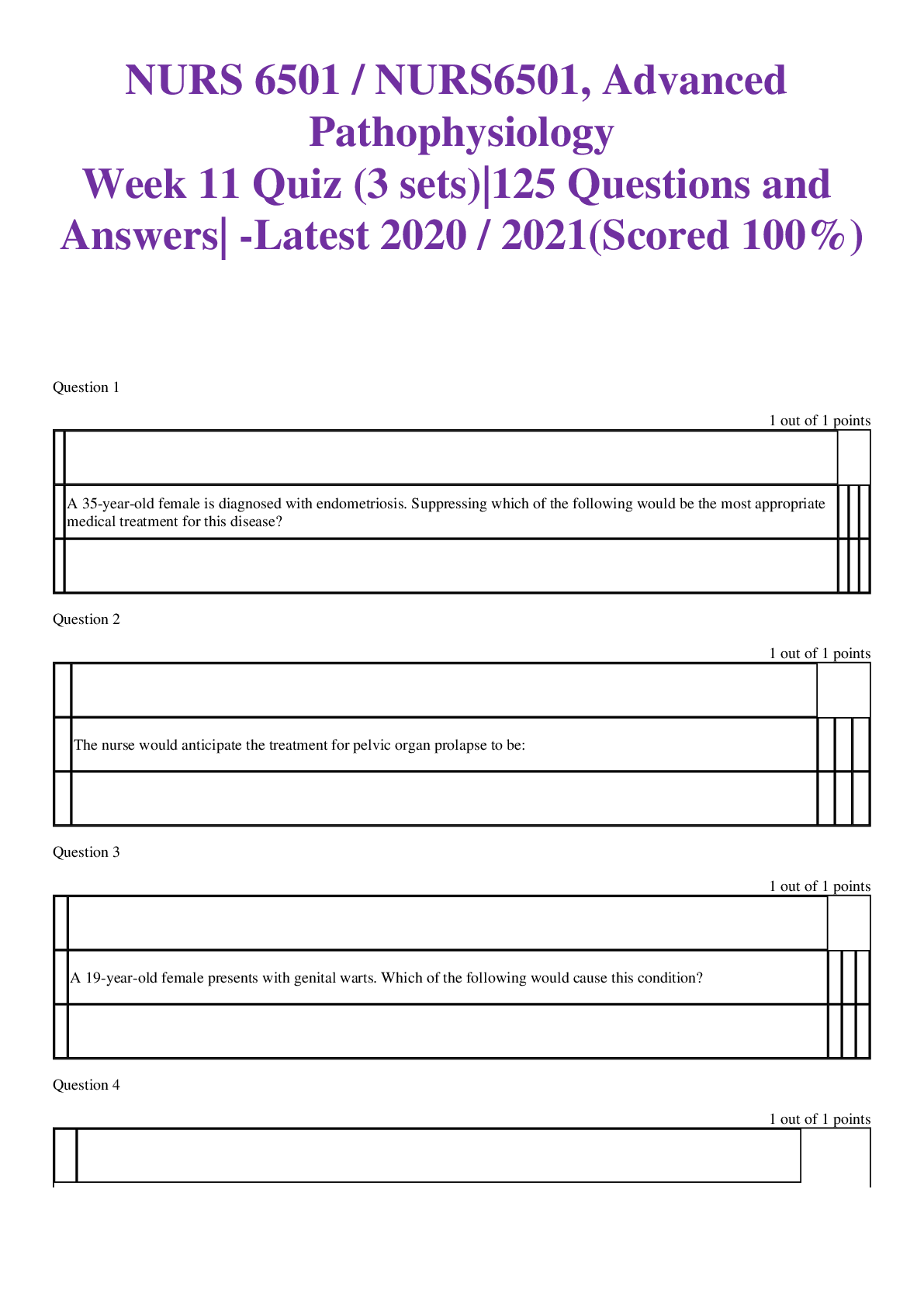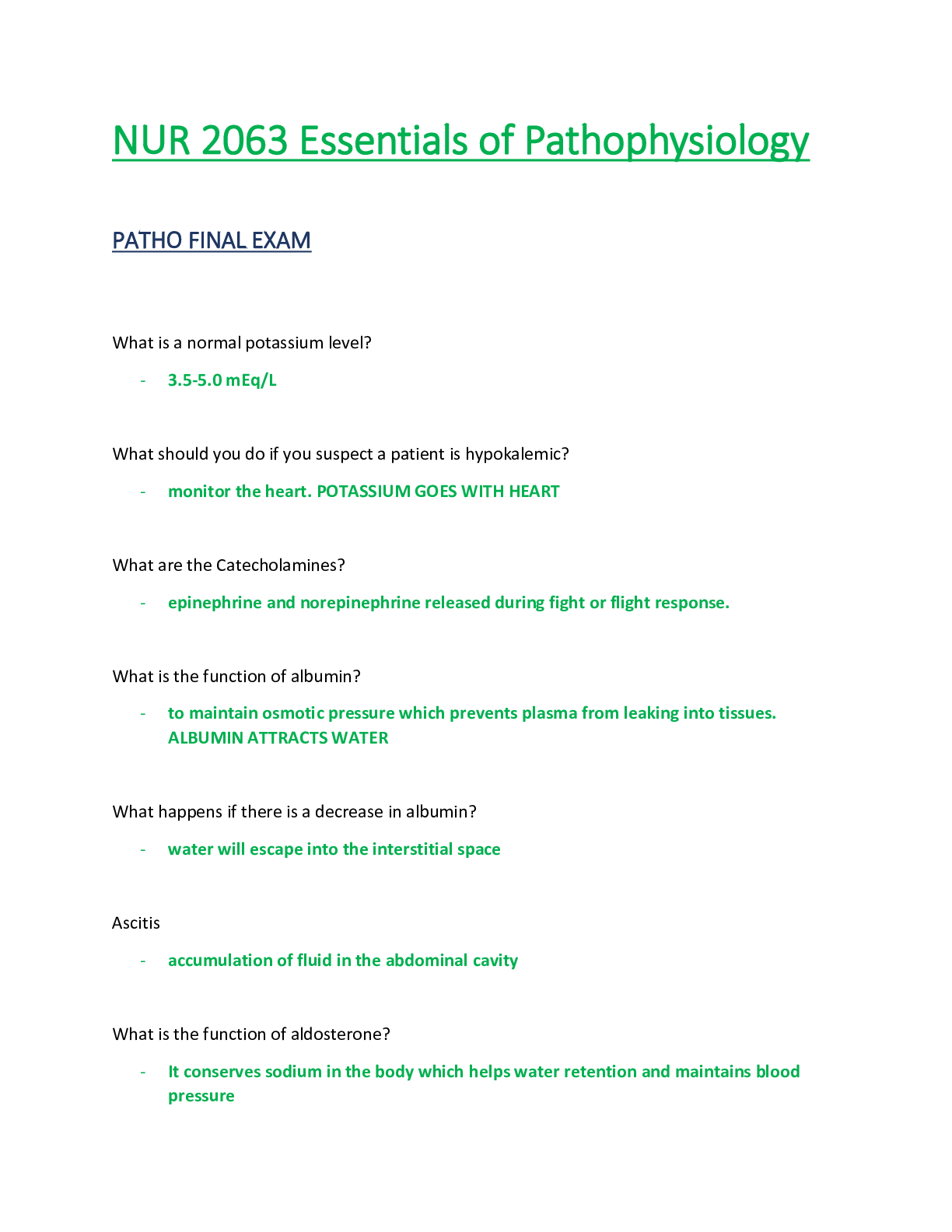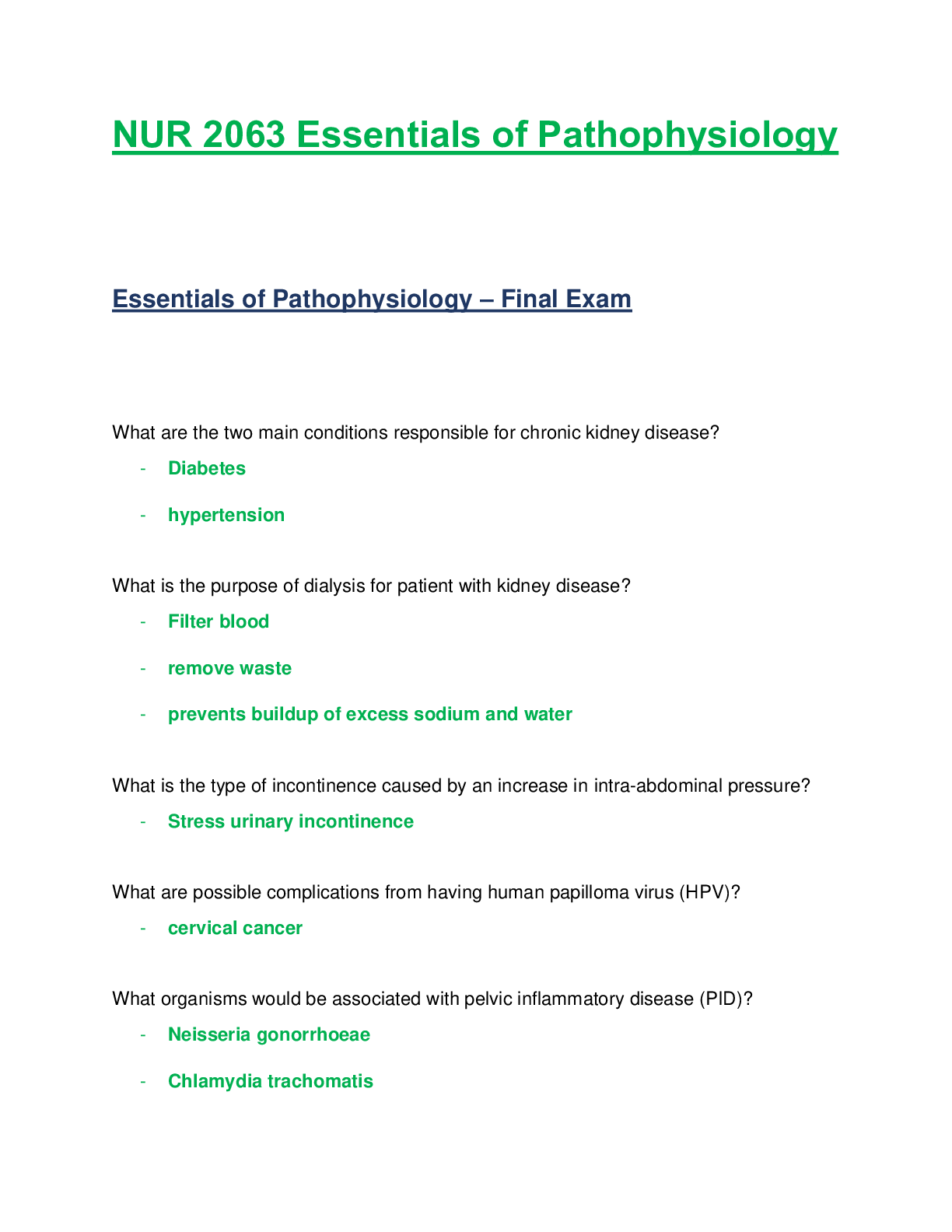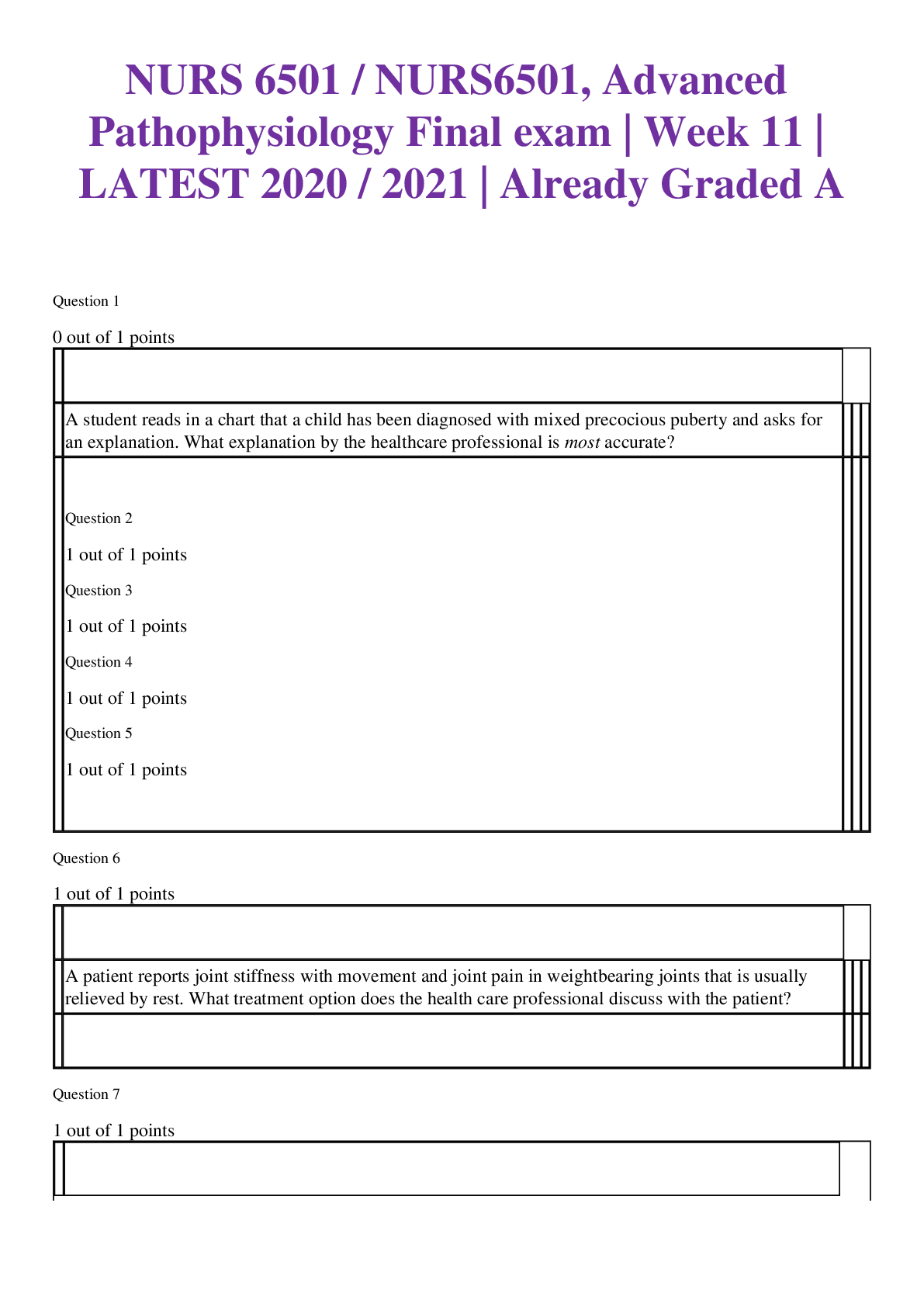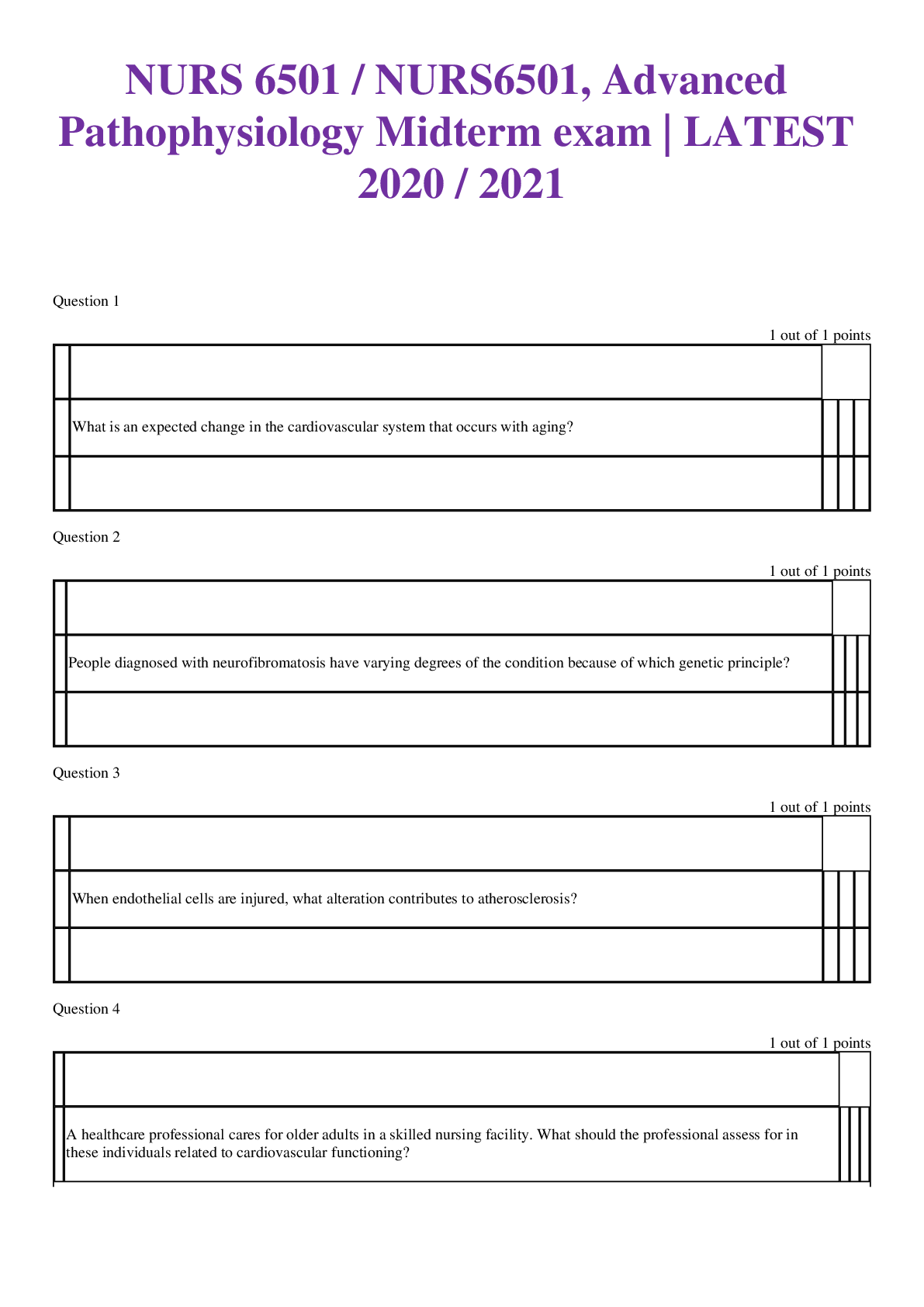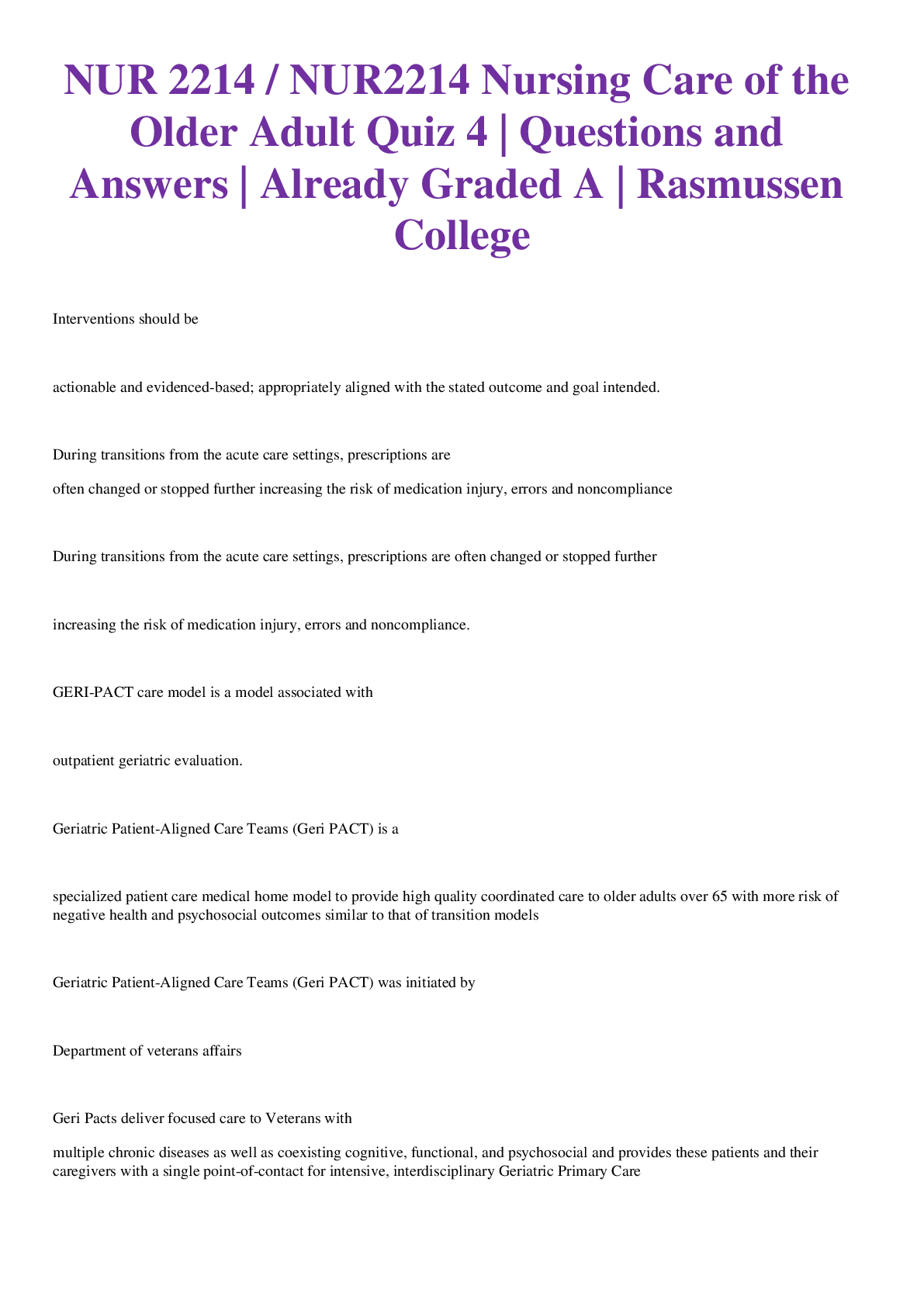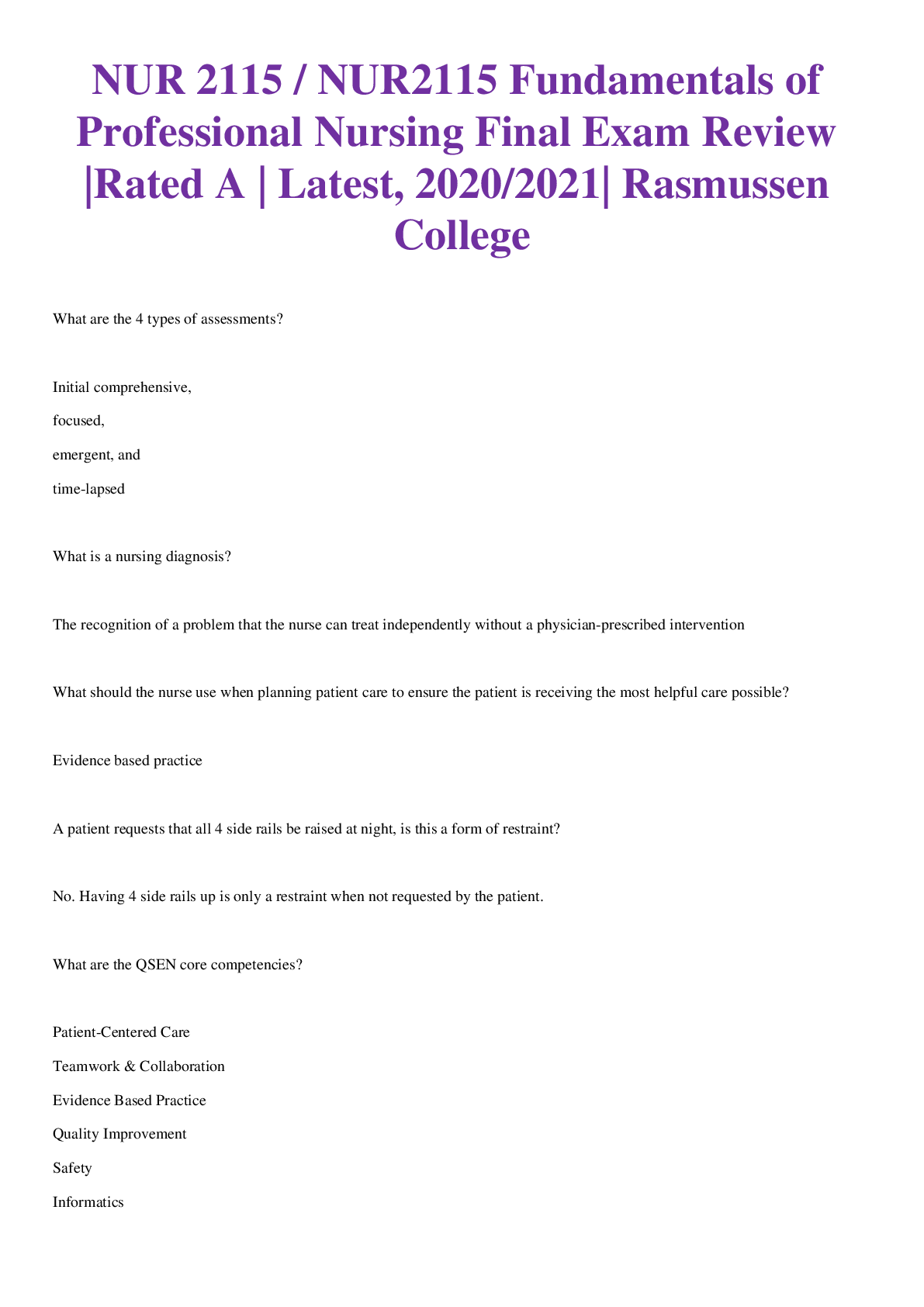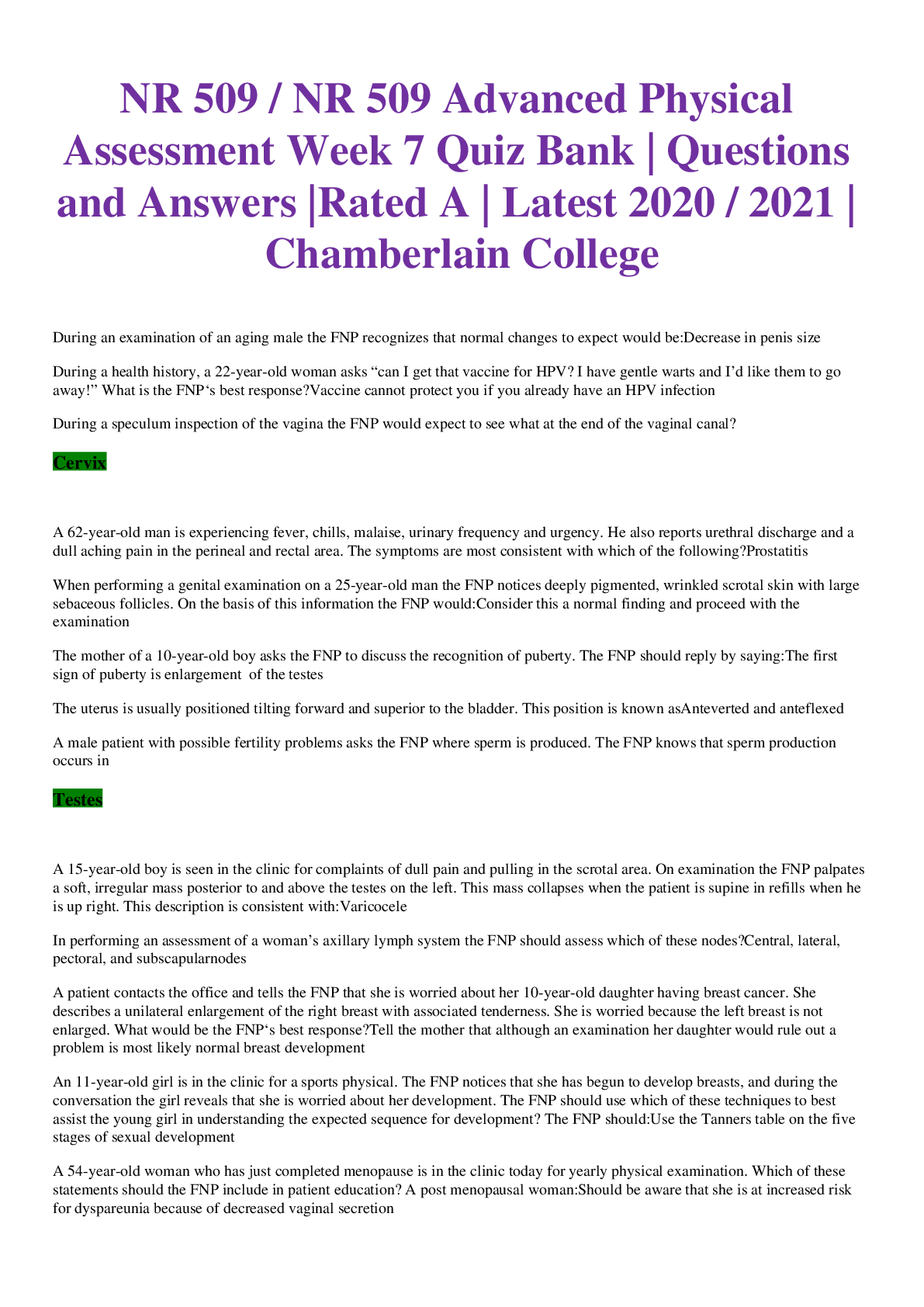*NURSING > EXAM > NUR 2063 / NUR2063 Essentials of Pathophysiology Exam 1 Review| Module 1 / 2 / 3 Highly Rated | Late (All)
NUR 2063 / NUR2063 Essentials of Pathophysiology Exam 1 Review| Module 1 / 2 / 3 Highly Rated | Latest, 2020 / 2021 | Rasmussen College
Document Content and Description Below
NUR 2063 / NUR2063 Essentials of Pathophysiology Exam 1 Review| Module 1 / 2 / 3 Highly Rated | Latest, 2020 / 2021 | Rasmussen College Module 1 1. Cause of edema • Swelling (too much water, so... dium) fluid retention , excess fluid in the interstitial space 2. What hormones assist with potassium distribution (I discussed 2 main hormones in the webex lecture) • Insulin • Epinephrin 3. Extracellular fluid has higher concentration of which electrolytes/substances (I discussed 2) • Sodium • Chloride 4. The energy currency of a cell and role the mitochondrion plays in this currency • Power plants • Aerobic metabolism—ATP ( we need oxygen for it to function) • Number in a given cell varies depending on the cell’s energy needs • Contains own DNA and ribosomes 5. Three electrolytes that impact bone • Phosphorus • Magnesium, • calcium • calcium + phosphorus inverse relation • calcium + magnesium synergistic • parathyroid hormone regulates calcium + phosphorus in the blood. 6. What happens during the alarm phase of Hans Selye’s General Adaptation Syndrome? • Initial reaction • Sympathetic nervous system • Observed bodily changes produced by stress • The initial symptom that the body experience when face stressful event • Natural reserve, time, genetics, age, gender, health status, nutrition, sleep–wake cycles, hardiness, and psychosocial factors • The flight or fight response due to stress 7. Remember this is the fight or flight stage. What clinical findings would the patient in the fight or flight stage present with? (Select All) • Alarm (initial reaction, sympathetic nervous system ) • Resistance (limited stressor, adaptation to the situation) • Exhaustion (adaptation failing, disease develops) 8. The four components of Pathophysiology (Select all) • Clinical manifestation: sign and symptom of the disease, stage (3) • Treatment implication (4) • Etiology: cause or reason for the problem (1) • Pathogenesis – development + evol of the disease (2) 9. Prevention and treatment of disease- eg. Primary, Secondary, Tertiary • Primary: do not have the disease and you are trying to prevent it (e.g., vaccines) • Secondary: disease early detection (e.g., Pap smears and yearly physicals) [Show More]
Last updated: 1 month ago
Preview 1 out of 8 pages
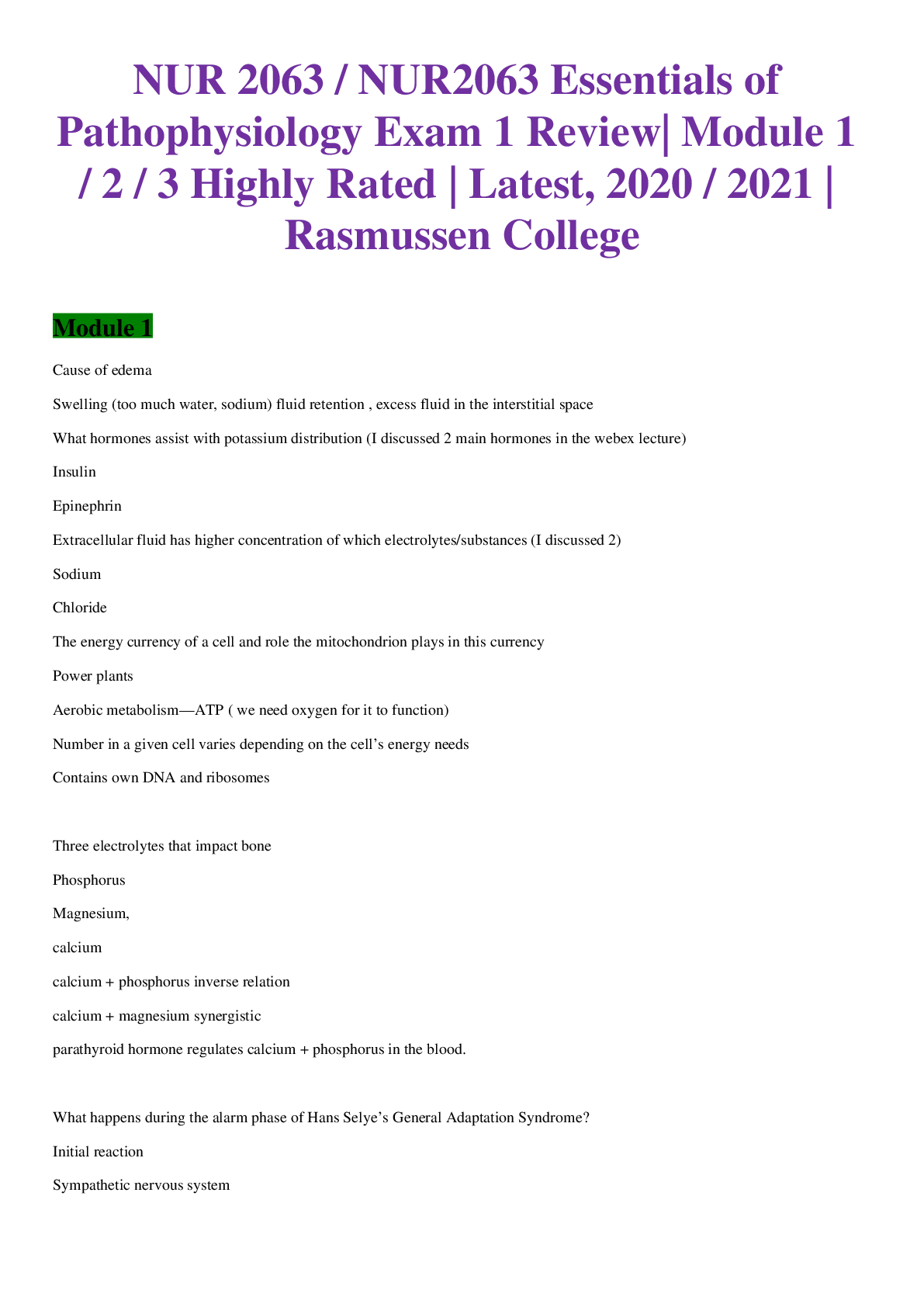
Reviews( 0 )
Document information
Connected school, study & course
About the document
Uploaded On
Dec 11, 2020
Number of pages
8
Written in
Additional information
This document has been written for:
Uploaded
Dec 11, 2020
Downloads
0
Views
25

